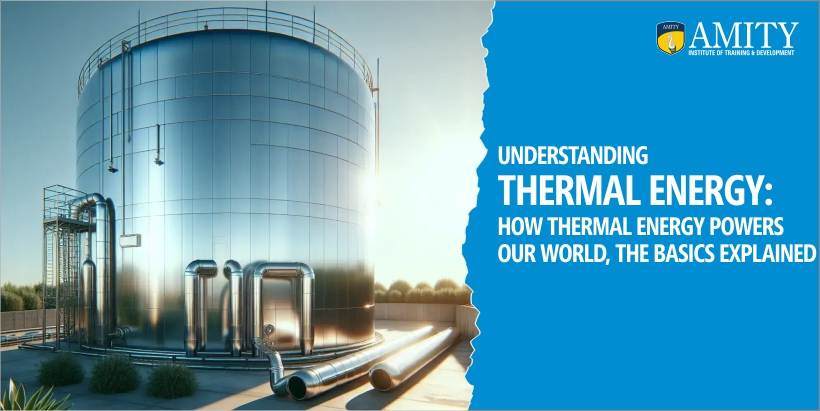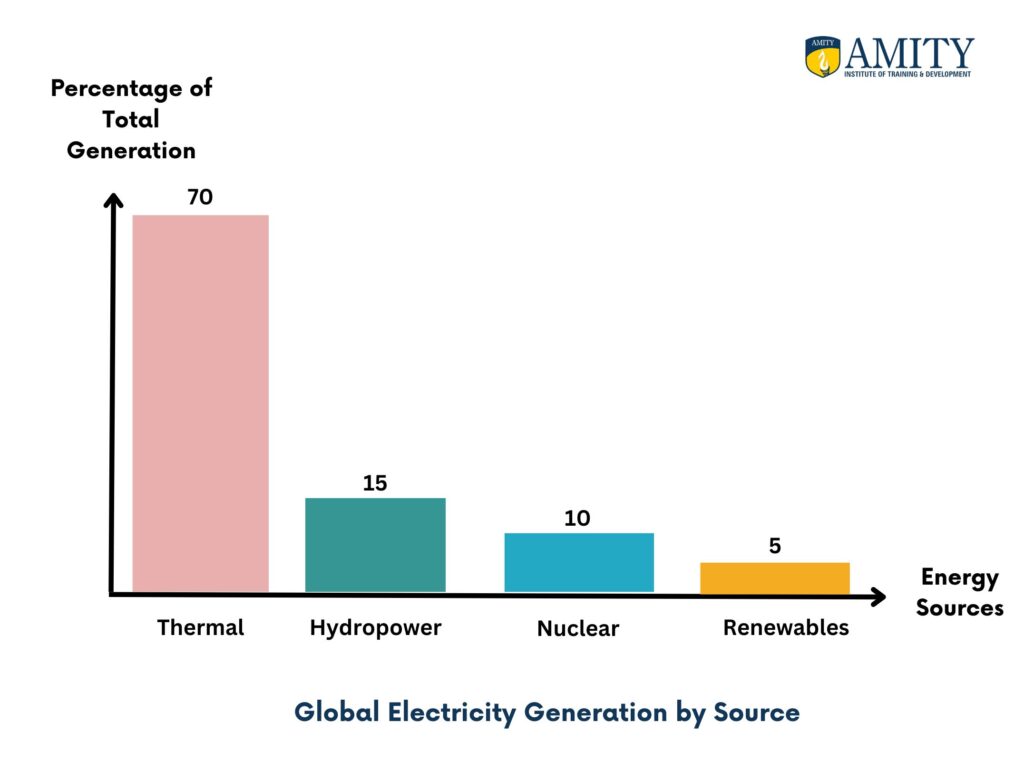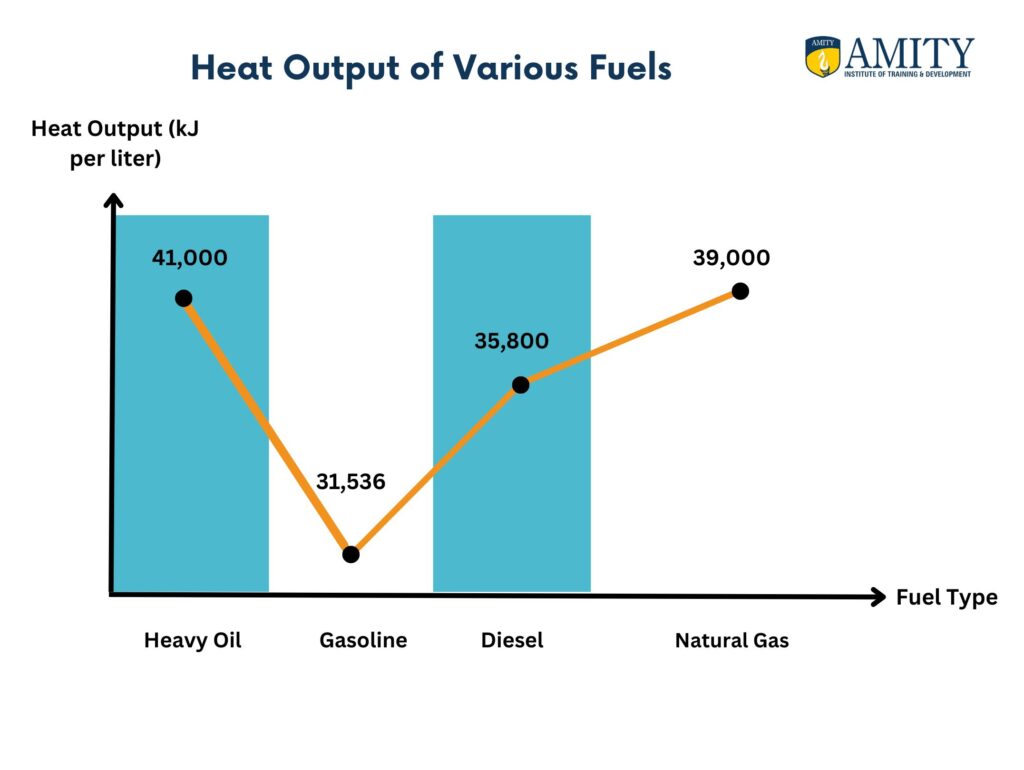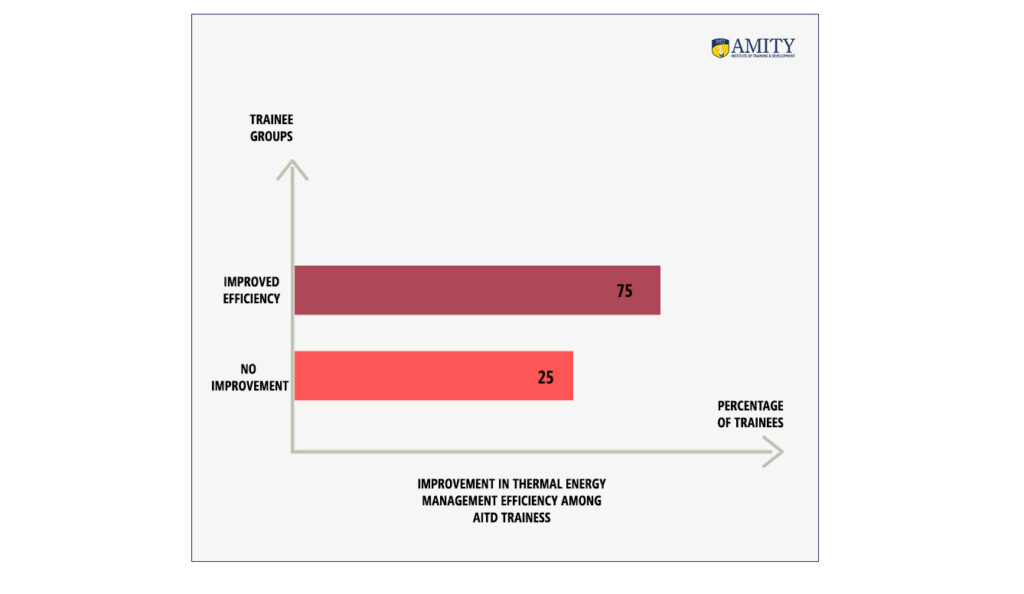Tech-Driven Solutions

Thermal energy, also known as heat energy, is one of the driving forces behind many processes in our world. It is created through the movement of atoms and molecules which is increased with temperature. In India, thermal power plants are the backbone of electricity generated in thermal power plants. These convert heat from fossil fuels into electrical energy.
India has focused more on renewable energy. It is studying geothermal energy to make use of different sources of energy. Conversion of thermal energy to electrical energy is essential for India’s growing power needs. India looks to improve its thermal capacity generation and management until 2024.
This blog will talk about the definition of thermal state and its applications in India. It will look into how it transforms into electrical energy. Scope of Geothermal Energy Power Plants and future of Thermal Power Generation will also be discussed.
What is Thermal Energy?
Thermal energy meaning refers to the energy found within a system from molecule movement. The greater the heat of an object, the more thermal flow that object possesses. This energy is the most important one for numerous environmental processes and technologies.
Understanding the Basics: How Does Thermal Energy Work?
In order to truly understand how thermal flow works, it is necessary to understand its three transfer methods: conduction, convection, and radiation.
- Conduction occurs when heat passes through direct contact.
- Convection refers to fluids’ movement, where warmer areas rise and cooler areas fall.
- Radiation refers to heat transfer via electromagnetic waves without a medium.
These are important in several uses, and for instance, electricity use.

(Source: Wikipedia)
Do You Know? Almost 70% of electricity in the world is generated from thermal power stations. They convert heat energy produced by fuels into electrical energy through a cycle.
What Are the Key Steps in the Energy Transformation in Thermal Power Plants?
The processes which convert thermal energy to electrical energy are:
- Combustion of Fuels: Combustion of fuels or organic materials produces heat.
- Generation of Steam: This heat converts water into steam.
- Activity of Turbines: The steam works on turbines to produce electricity.
The process is crucial for finding cleaner ways to meet the world’s electricity needs.

(Source: tepco)
Do you know that by burning one liter of heavy oil, approximately 41,000 kJ or 10,000 kcal of heat energy is generated? This points out the potential of fossil fuels for thermal expansion.
Exploring the Role of Thermal Dynamics in India’s Power Landscape
India has made great strides in heat energy production. This is mainly due to thermal mass based electric power stations. By 2024, India’s thermal capacity stands at about 243.05 GW, mostly being coal. This, in turn, helps meet the growing demand for electricity in the country.
Dependence on Fossil Fuels
Most thermal power plant fuel in India rely on coal and natural gas. This contributes to environmental concerns. But new technology decreases the harmful emissions and permits smoother flows.
Geothermal Energy Power Plant Fuel: What You Should Know
Geothermal energy is one of those new perspectives towards electricity generation. It uses the Earth’s interior heat as well. This is a clean source, which could reduce pollution by fossil fuels. Although it has not been in much use in India, the prospect is surely promising.
(Source: eai)
DO YOU KNOW? Geothermal power accounts for approximately 0.4% of the electricity generated in India. However, there is a lot of scope here as technology improves
Why is Thermal Energy Management Critical for Sustainable Energy Production in India?
Good thermal energy management is essential for higher production at a lower cost. Companies can implement various methods to enhance their thermal efficiency:
- Thermal Energy Storage (TES):This technology will store extra heat produced for later use. This supply matches demand.
- Heat Recovery Systems: Energy waste in the processing techniques can be reduced. That will yield efficiency.
- Advanced Monitoring Systems: IoT and AI can help make decisions based on real-time data of thermal state.
Companies and organizations can work more efficiently and help the environment by adopting these techniques.
What Are the Best Practices for Managing Thermal Power Plant Fuel?
India’s response remains more challenges in fossil fuel utilization in power.
- To increase the thermal output production, India has to look for cleaner technology, which are renewables, such as solar and wind.
- India can use new technology in present plants to make them efficient.
What Are the Key Challenges Facing Thermal Power Plant Fuel?
The primary sources of fuels for thermal plants are coal, natural gas, and oil. However, they pollute the environment. The big concerns involve:
- Alternative cleaner sources that reduce carbon emissions.
- Cost to shift from old fuels.
·
DO YOU KNOW? AITD’s programs led to a 20% reduction in energy costs for participating organizations.
How Can Organizations Benefit from Energy Transformation in Thermal Power Plants?
Knowing how thermal flow works in plants can help improve efficiency and reduce pollution. Companies can benefit in the following areas
- Training employees to understand how to properly handle thermal systems
- Investing in research towards developing new, better solutions.
Talaei et al. published a relevant research paper entitled “Improvement of thermal energy transfer behind a double step using non-uniform magnetic fields” in the previous year. The present study of the new direction toward the betterment of thermal flow transfer in cooling systems is done. It indicates how porous baffles increase efficiency and can increase it up to 90%.
Unlock the Potential of Geothermal Energy Power Plants: Building Self-Efficacy Through AITD Training
The knowledge of thermal properties are important for businesses intending to save energy and reduce cost. Amity Institute of Training and Development (AITD) provides special training. This helps companies manage and use thermal systems well.
DO YOU KNOW? AITD teaches renewable as well as conventional sources.
How AITD Addresses Thermal Load Production in India Through Education
AITD trains in elaborate depth for better knowledge and management of thermal properties. Their courses include the following:
1. Courses on Thermal Dynamics
Thermal Dynamics is explained, including its types. Students learn about conversion of thermal energy to electrical energy with the part of these thermal power plants in the generation process.
2. Geothermal Energy Power Plants
These sessions consist of geothermal energy power plants covered in AITD. Thus, geothermal flow can be utilized properly and helps India to pursue sustainable practices.
3. Thermal Energy Production in India
The AITD speaks about the importance of heat energy production in India. It includes the current trends and future prospects too. It thus helps companies set in line with national goals.
4. Techniques of Energy Transformation
Insights into the energy transformation in thermal power plants in training. It demonstrates how fuel types are harnessed without wastage. This information can be used to improve and optimize procedures while also lowering expenses.
5. Thermal Energy Management Techniques
AITD provides ways for efficient thermal flow management. A primary area of concern is improving efficiency while also reducing environmental impact. They research new solutions like thermal mass storage systems.

DO YOU KNOW? More than 75% of AITD graduates believe that their companies operate more efficiently on thermal analysis & management after attending the courses.
How AITD Supports the Future of Thermal Energy Power in the Industry?
Thermal mass is very important as it helps one deal with the present and future challenges regarding energy. With new technology and direction toward sustainability, this energy would turn our world into a cleaner and more efficient place. Companies can be encouraged to find novel ways to use thermal potential, which would help with their activities and the environment as well.







